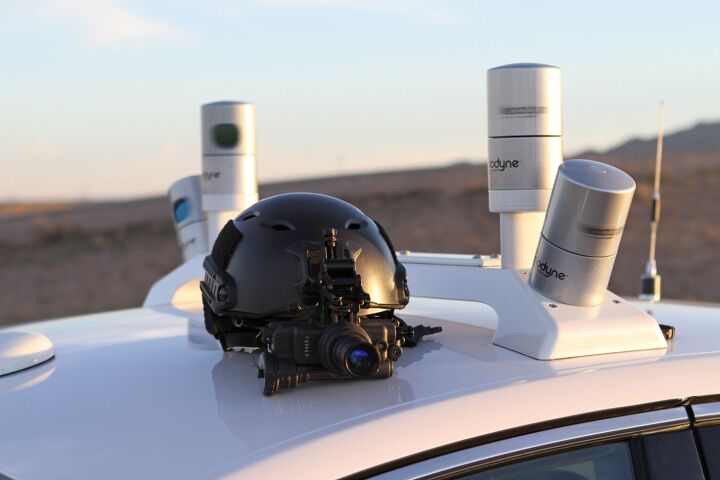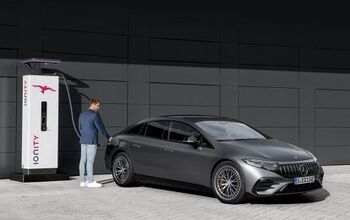House Unanimously Approves Proposal to Deploy Self-driving Cars, and Not Everyone's Happy

On Wednesday, the U.S. House unanimously approved a sweeping proposal to expedite the deployment of self-driving cars and prohibit states from blocking autonomous vehicle testing.
“With this legislation, innovation can flourish without the heavy hand of government,” Ohio Republican Bob Latta said on the House floor leading up to Wednesday’s vote. Latta is chairman of the House Energy and Commerce subcommittee that developed the legislation with support from tech companies and the automotive industry.
One thing missing from the House measure is large trucks, which the Senate hopes to address in its own bipartisan legislation. Congress announced a September 13th hearing to examine the role of autonomous commercial vehicles and how they may fit into the Senate’s pending self-driving legislation. Meanwhile, the House’s bill moves up the board to be put to a vote within the Senate at a later date.
The proposal would allow automakers to obtain exemptions to deploy up to 25,000 vehicles without meeting existing automotive safety standards in the first year. That threshold would eventually rise to 100,000 vehicles annually. The bill also instructs the National Highway Traffic Safety Administration to revise its existing standards to include self-driving cars.
Companies hoping to develop autonomous vehicles are also required to draft security and privacy plans that document their approach for ensuring safe testing, but they do not need regulatory approval to put them on the road. Manufacturers are, however, required to demonstrate self-driving cars are at least as mechanically safe as existing vehicles.
Safety was the word of the day prior to the House vote. Representatives took it upon themselves to remind their colleagues that U.S. road deaths rose 7.7 percent in 2015. However, the largest contributing factor to that statistic was a growing population. Still, the NHTSA cites human error as the primary cause for 94 percent of all crashes — making it the perfect bullet point to cap off the debate.
There was also the matter of keeping America competitive. “If we’re going to stay at the forefront of innovation and technology in this country, we have to be driving the technology for autonomous vehicles,” Michigan Democratic Representative Debbie Dingell stated before the vote. “I’m really proud of the fact that we got this out of the House. We kept our heads down.”
Despite the victory, some Democrats expressed concerns over the lack of input on the bill from the NHTSA — which still lacks any Trump-appointed leadership. Others questioned whether the federal government even had a right to impose these vehicles on individual states, including some consumer advocacy groups.
“The autonomous vehicle bill just passed by the House leaves a wild west without adequate safety protections for consumers. It pre-empts any state safety standards, but there are none at the national level,” the Consumer Watchdog group said in a statement.
According to Reuters, U.S. Transportation Secretary Elaine Chao is expected to unveil revised self-driving guidelines on Tuesday in Ann Arbor, Michigan. The department later confirmed its intentions to showcase the rules sometime next week.
[Image: Ford Motor Company]

A staunch consumer advocate tracking industry trends and regulation. Before joining TTAC, Matt spent a decade working for marketing and research firms based in NYC. Clients included several of the world’s largest automakers, global tire brands, and aftermarket part suppliers. Dissatisfied with the corporate world and resentful of having to wear suits everyday, he pivoted to writing about cars. Since then, that man has become an ardent supporter of the right-to-repair movement, been interviewed on the auto industry by national radio broadcasts, driven more rental cars than anyone ever should, participated in amateur rallying events, and received the requisite minimum training as sanctioned by the SCCA. Handy with a wrench, Matt grew up surrounded by Detroit auto workers and managed to get a pizza delivery job before he was legally eligible. He later found himself driving box trucks through Manhattan, guaranteeing future sympathy for actual truckers. He continues to conduct research pertaining to the automotive sector as an independent contractor and has since moved back to his native Michigan, closer to where the cars are born. A contrarian, Matt claims to prefer understeer — stating that front and all-wheel drive vehicles cater best to his driving style.
More by Matt Posky
Latest Car Reviews
Read moreLatest Product Reviews
Read moreRecent Comments
- Akear Does anyone care how the world's sixth largest carmaker conducts business. Just a quarter century ago GM was the world's top carmaker. [list=1][*]Toyota Group: Sold 10.8 million vehicles, with a growth rate of 4.6%.[/*][*]Volkswagen Group: Achieved 8.8 million sales, growing sharply in America (+16.6%) and Europe (+20.3%).[/*][*]Hyundai-Kia: Reported 7.1 million sales, with surges in America (+7.9%) and Asia (+6.3%).[/*][*]Renault Nissan Alliance: Accumulated 6.9 million sales, balancing struggles in Asia and Africa with growth in the Americas and Europe.[/*][*]Stellantis: Maintained the fifth position with 6.5 million sales, despite substantial losses in Asia.[/*][*]General Motors, Honda Motor, and Ford followed closely with 6.2 million, 4.1 million, and 3.9 million sales, respectively.[/*][/list=1]
- THX1136 A Mr. J. Sangburg, professional manicurist, rust repairer and 3 times survivor is hoping to get in on the bottom level of this magnificent property. He has designs to open a tea shop and used auto parts store in the facility as soon as there is affordable space available. He has stated, for the record, "You ain't seen anything yet and you probably won't." Always one for understatement, Mr. Sangburg hasn't been forthcoming with any more information at this time. You can follow the any further developments @GotItFiguredOut.net.
- TheEndlessEnigma And yet government continues to grow....
- TheEndlessEnigma Not only do I not care about the move, I do not care about GM....gm...or whatever it calls itself.
- Redapple2 As stated above, gm now is not the GM of old. They say it themselves without realizing it. New logo: GM > gm. As much as I dislike my benefactor (gm spent ~ $200,000 on my BS and MS) I try to be fair, a smart business makes timely decisions based on the reality of the current (and future estimates) situation. The move is a good one.


































Comments
Join the conversation
Some people are happy: https://www.cbsnews.com/news/4-ways-crooks-stage-accidents-to-crash-your-car/ (although they'll probably get busted by the telematics)
"One thing missing from the House measure is large trucks, which the Senate hopes to address in its own bipartisan legislation." Hey, I've got an idea: Why don't we build special roads for these large trucks? That way, we could increase the capacity of these vehicles, perhaps even attach a bunch of the trailers together for efficiency, and maybe include metal rails in the roadway that match the track width of the vehicles' wheels! Nah, too crazy...it'd never work.